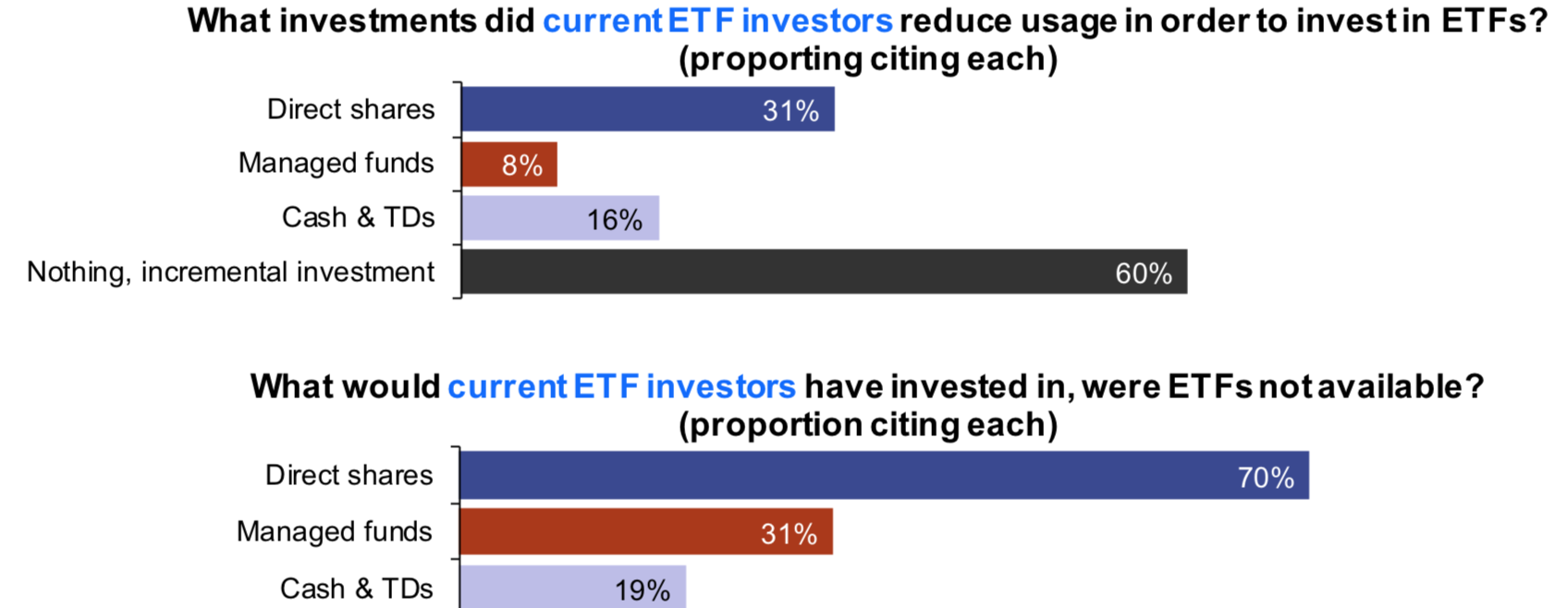SMSFs and rich Australians are becoming less important to ETF providers looking for new assets, new research indicates.
"Go where the money is… and go there often," the famous bank robber Willie Sutton once opined. And Aussie ETF providers have been thinking along similar lines.
For most of the past decade, going where the money is has sent ETF providers chasing self-managed superannuation funds and older richer Australians. But according to a new study put out by research group Investment Trends and ETF issuer BetaShares, the target market is on the move, and is starting to tilt younger, poorer and away from SMSFs.
Five years ago, more than 40% of ETFs in Australia were owned by SMSFs and the average age of an ETF investor was 56 years old, the groups' research found. Today, however, SMSFs only own 9% of Australian ETFs and the average age of an ETF investor is 42 years old.
The drop off in SMSF concentration and the Benjamin Buttoning of ETF investors does not owe to SMSFs or retirees ditching ETFs, the research found. On the contrary: more SMSFs and retirees are buying ETFs than ever before. Rather the shift owes to younger self-directed investors migrating to ETFs at an increasing speed.
"Millennials are facing financial challenges not experienced by previous generations: minimal returns from bank savings accounts, high property prices and large student loan debt," said Ilan Israelstam, co-founder of BetaShares, in an email to ETF Stream.
"These challenges are pushing Millennials to consider alternative options in order to start building their nest-egg or achieve savings goals."
The report also put the influence of financial planners under the spotlight. Conventional industry wisdom holds that financial planners are influential in directing new funds into ETFs. And, indeed, a 70% majority of planners recommend or intend to recommend ETFs, the report found.
Yet only one in eight investors come to ETFs through planners, reflecting the fact that most Australians do not use financial planners.
There were also vast differences between different types planners. What are called "non-aligned" planners - those untethered to big dealer groups or financial institutions - have been some of the biggest adopters of ETFs, BetaShares said. While "aligned" planners -those with connections to big banks or insurance groups - have been much slower.
"These 'aligned' financial planners are typically only able to invest in products (whether ETFs or otherwise) that are approved by their dealer group (often known as the Approved Product List of APL). Such groups have been slower to adopt ETFs, although this is definitely changing," said Mr Israelstam.
Aligned planners represent a bigger chunk of the financial planning market.
The report also unpicked why investors liked ETFs. Diversification was the biggest lure for investors. Cost, sometimes thought to be ETFs biggest attraction, came in a distant second.
Access to overseas markets came third among reasons customers came to ETFs. Australian corporate profits are growing slower than their European and US counterparts, leaving many Australians looking overseas for superior returns. The report suggested many are using ETFs as a way to get there.



